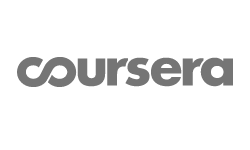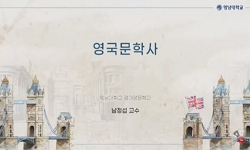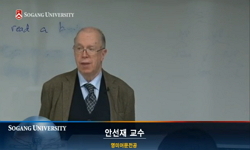Due to the advances in biomedical science, projects on human tissue and body are lively underway. Although the advances of the biomedical science play a positive role in improving quality of life, there is a growing concern about infringing upon the d...
http://chineseinput.net/에서 pinyin(병음)방식으로 중국어를 변환할 수 있습니다.
변환된 중국어를 복사하여 사용하시면 됩니다.
- 中文 을 입력하시려면 zhongwen을 입력하시고 space를누르시면됩니다.
- 北京 을 입력하시려면 beijing을 입력하시고 space를 누르시면 됩니다.

영국의 인체유래물 연구에 있어서의 동의 및 면제제도 = A Study on the Consent Exemption System in Human Biological Material for Research (in England, Wales, and Northern Ireland)
한글로보기https://www.riss.kr/link?id=A107049538
- 저자
- 발행기관
- 학술지명
- 권호사항
-
발행연도
2020
-
작성언어
Korean
-
주제어
체유래물 ; 동의 ; 동의면제 ; 뉘른베르크 재판 ; 헬싱키선언 ; 국제윤리지침 ; 타이페이선언 ; 영국 ; 웨일즈 ; 북아일랜드 ; 생명윤리법 ; 동의방식 ; 인체조직법 2004 ; Human Material ; Consent ; Consent Exemption ; England ; Wales ; and Northern Ireland ; Bioethics and Safety Act ; extended consent system ; Human Tissue Act 2004
-
등재정보
KCI등재
-
자료형태
학술저널
-
수록면
31-59(29쪽)
-
KCI 피인용횟수
0
- DOI식별코드
- 제공처
- 소장기관
-
0
상세조회 -
0
다운로드
부가정보
다국어 초록 (Multilingual Abstract)
In relation to biomedical science, human tissue provides the priceless usefulness as an object of medical study and a development of medicine. Therefore, human tissue offer the broadcast research environment, which explains why the legislation of the wide application of utilizing human tissue upon medical practice is required. Furthermore, the protection on self-determination of donor and right to freedom of action should be taken in to consideration. The procedural device for compromising antithetical values is the prerequisite for consent of human tissue donor and exemption.
The consent exemption of human tissue has been globally developed via ‘Nuremberg Code of 1947’, WMA(World Medical Association) ‘Declaration of Helsinki 1964’, ‘International Ethical Guidelines for Biomedical Research Involving Human Subjects 1993’ by CIOMS(The Council for International Organization of Medical Sciences), WMA Declaration of Taipei on Ethical Considerations Regarding Health Databases and Biobanks. Moreover, EU members recently began to transform from existing consensual method to expanded or protested method.
Human Tissue Act 2004(HTA), in the UK, also provides that storage and use of human tissue is required to get donor’s consent. And the activity using human for other purposes which are not consented is subject to punishment under HTA. However, secondary use of human tissue can get a permit without procedure for consent if anonymization of the storage of human tissue receives approval of ‘Institutional Review Board’(IRB). In addition, extraction and utilization of DNA information from human tissue without the consent of its donor is presumed as an invasion of privacy. Nevertheless, using DNA information for the purpose of urgent medical care or criminal investigation can be exempted from the consent.
Although a full explanation regarding the consent, there is a potential for violation of donor’s human right. However, bolstering human tissue research is required in order to achieve an improvement in the quality of life of human beings. Thus, we need to raise the public nature of human tissue research and to reify the requirement of the consent exemption for vitalizing the healthcare industry. Such prerequisites of the consent exemption teaches us a lot with regard to institutional arrangements of human tissue study in South Korea.
Due to the advances in biomedical science, projects on human tissue and body are lively underway. Although the advances of the biomedical science play a positive role in improving quality of life, there is a growing concern about infringing upon the dignity of human beings.
In relation to biomedical science, human tissue provides the priceless usefulness as an object of medical study and a development of medicine. Therefore, human tissue offer the broadcast research environment, which explains why the legislation of the wide application of utilizing human tissue upon medical practice is required. Furthermore, the protection on self-determination of donor and right to freedom of action should be taken in to consideration. The procedural device for compromising antithetical values is the prerequisite for consent of human tissue donor and exemption.
The consent exemption of human tissue has been globally developed via ‘Nuremberg Code of 1947’, WMA(World Medical Association) ‘Declaration of Helsinki 1964’, ‘International Ethical Guidelines for Biomedical Research Involving Human Subjects 1993’ by CIOMS(The Council for International Organization of Medical Sciences), WMA Declaration of Taipei on Ethical Considerations Regarding Health Databases and Biobanks. Moreover, EU members recently began to transform from existing consensual method to expanded or protested method.
Human Tissue Act 2004(HTA), in the UK, also provides that storage and use of human tissue is required to get donor’s consent. And the activity using human for other purposes which are not consented is subject to punishment under HTA. However, secondary use of human tissue can get a permit without procedure for consent if anonymization of the storage of human tissue receives approval of ‘Institutional Review Board’(IRB). In addition, extraction and utilization of DNA information from human tissue without the consent of its donor is presumed as an invasion of privacy. Nevertheless, using DNA information for the purpose of urgent medical care or criminal investigation can be exempted from the consent.
Although a full explanation regarding the consent, there is a potential for violation of donor’s human right. However, bolstering human tissue research is required in order to achieve an improvement in the quality of life of human beings. Thus, we need to raise the public nature of human tissue research and to reify the requirement of the consent exemption for vitalizing the healthcare industry. Such prerequisites of the consent exemption teaches us a lot with regard to institutional arrangements of human tissue study in South Korea.
국문 초록 (Abstract)
생명의학연구에 있어서 인체유래물은 연구대상으로서의 가치와 치료제로 활용될 가치는 상당히 크므로, 연구자들에게 폭넓은 연구환경을 제공하고, 의료인들의 의료행위에 적극적·효율적으로 활용될 수 있도록 입법할 필요가 있으면서도, 동시에 인체유래물 제공자의 자기결정권과 일반적 행동자유권의 보호도 함께 고려되어야 할 것이다. 이러한 상반된 가치를 절충하고자 하는 절차적 장치가 인체유래물 제공자의 동의와 동의면제의 요건이라고 볼 수 있다.
최근에 우리나라는 인체유래물 연구를 활성화하기 위하여, 생명윤리법을 개정하여 잔여검체의 재활용 분야에서 사전 서면동의제도를 대신하는 사전 고지제도를 도입하였다. 이와 같이 우리나라도 사전고지제도를 도입하는 등 연구자들에게 보다 더 좋은 인체유래물 연구의 환경을 제공하고자 하는 노력을 계속하고 있으며, 이러한 경향은 세계적인 흐름이기도 하다.
이에 본 논문에서는 제2장에서 인간대상연구에 생명윤리의식을 도입한 1947년 뉘른베르크 코드, 인체유래물 연구를 인간대상연구의 한 분야로 인식한 1964년 헬싱키선언, 생명윤리의 적용범위를 생명의학연구에서 건강 관련 연구로 까지 확대하면서, 동의요건과 동의면제요건을 구체화시킨 세계의학기구협의회의 1982년 ‘국제윤리지침’, 인체유래물 기증자의 권리를 구체적으로 보장하면서 동시에 권리의 제한을 명시하고, 동의면제사유로 익명화된 건강정보의 국민건강보호를 제시하는 등 기증자의 권리보호와 건강정보의 공익적 활용과 상업적 활용을 적절하게 조화하고 있는 세계의사회의 2016년 타이페이선언 그리고 인체유래물 연구를 활성화하기 위하여 동의방식에서 확대된 동의방식 또는 항변방식으로 전환되고 있는 유럽연합회원국의 최근 동향을 검토·분석하였다.
제3장에서는 영국에서 인체유래물 규제의 기본법인 인체조직법상의 동의 및 동의면제제도를 살펴보았다. 1961년에 처음 제정된 인체조직법은 규제의 범위가 불명하며 시대에 어긋난 지나친 온정주의라는 비판을 받게 되어, 2004년에 인체의 기증·획득·보관, 그리고 장기 조직의 이용 관련 쟁점들에 대한 전반적이고 지속적인 법률 체계를 수립하기 위하여 전면개정의 과정을 거쳤다. 동법의 Section 1은 살아있는 기증자에게서 나온 조직에 대한 보관 및 사용에 대해 동의를 받도록 규정하고 있으며, Section 8은 신체조직을 원래 동의했던 것과 다른 목적으로 사용하는 것을 처벌 내용을 담고 있다. 한편 보관된 시료가 익명화되어 연구윤리위원회의 승인을 거치면 동의 절차가 없는 경우에도 이차적 이용이 허용된다. 하지만 이와 같은 이차적 이용 또한 당사자의 반대나 세포계의 특징이 당사자의 것으로 명확히 구분되지 않는 경우 시행이 금지된다.
Section 45는 당사자 동의 없이 인체조직에서 DNA정보를 추출 및 사용하는 것을 개인의 프라이버시 침해로 간주한다. 다만 추출된 DNA 정보가 타인의 건강과 생명을 위해 긴급히 필요한 의학적 치료, 범죄수사, 혹은 Section 1 의 규정에 따라 동의가 없이도 사용 가능한 경우는 불법이 아니다.
실행규칙의 제9장(The Code of Practice 9; ...
오늘날 생명의학기술이 발달되어 인간대상 연구와 인체유래물에 관한 연구가 활발히 이루어지고 있다. 이러한 생명의학의 발달은 인간의 삶의 질을 고양시키는 긍정적인 면도 있지만, 인간...
오늘날 생명의학기술이 발달되어 인간대상 연구와 인체유래물에 관한 연구가 활발히 이루어지고 있다. 이러한 생명의학의 발달은 인간의 삶의 질을 고양시키는 긍정적인 면도 있지만, 인간의 존엄성을 침해할 우려도 커지고 있다.
생명의학연구에 있어서 인체유래물은 연구대상으로서의 가치와 치료제로 활용될 가치는 상당히 크므로, 연구자들에게 폭넓은 연구환경을 제공하고, 의료인들의 의료행위에 적극적·효율적으로 활용될 수 있도록 입법할 필요가 있으면서도, 동시에 인체유래물 제공자의 자기결정권과 일반적 행동자유권의 보호도 함께 고려되어야 할 것이다. 이러한 상반된 가치를 절충하고자 하는 절차적 장치가 인체유래물 제공자의 동의와 동의면제의 요건이라고 볼 수 있다.
최근에 우리나라는 인체유래물 연구를 활성화하기 위하여, 생명윤리법을 개정하여 잔여검체의 재활용 분야에서 사전 서면동의제도를 대신하는 사전 고지제도를 도입하였다. 이와 같이 우리나라도 사전고지제도를 도입하는 등 연구자들에게 보다 더 좋은 인체유래물 연구의 환경을 제공하고자 하는 노력을 계속하고 있으며, 이러한 경향은 세계적인 흐름이기도 하다.
이에 본 논문에서는 제2장에서 인간대상연구에 생명윤리의식을 도입한 1947년 뉘른베르크 코드, 인체유래물 연구를 인간대상연구의 한 분야로 인식한 1964년 헬싱키선언, 생명윤리의 적용범위를 생명의학연구에서 건강 관련 연구로 까지 확대하면서, 동의요건과 동의면제요건을 구체화시킨 세계의학기구협의회의 1982년 ‘국제윤리지침’, 인체유래물 기증자의 권리를 구체적으로 보장하면서 동시에 권리의 제한을 명시하고, 동의면제사유로 익명화된 건강정보의 국민건강보호를 제시하는 등 기증자의 권리보호와 건강정보의 공익적 활용과 상업적 활용을 적절하게 조화하고 있는 세계의사회의 2016년 타이페이선언 그리고 인체유래물 연구를 활성화하기 위하여 동의방식에서 확대된 동의방식 또는 항변방식으로 전환되고 있는 유럽연합회원국의 최근 동향을 검토·분석하였다.
제3장에서는 영국에서 인체유래물 규제의 기본법인 인체조직법상의 동의 및 동의면제제도를 살펴보았다. 1961년에 처음 제정된 인체조직법은 규제의 범위가 불명하며 시대에 어긋난 지나친 온정주의라는 비판을 받게 되어, 2004년에 인체의 기증·획득·보관, 그리고 장기 조직의 이용 관련 쟁점들에 대한 전반적이고 지속적인 법률 체계를 수립하기 위하여 전면개정의 과정을 거쳤다. 동법의 Section 1은 살아있는 기증자에게서 나온 조직에 대한 보관 및 사용에 대해 동의를 받도록 규정하고 있으며, Section 8은 신체조직을 원래 동의했던 것과 다른 목적으로 사용하는 것을 처벌 내용을 담고 있다. 한편 보관된 시료가 익명화되어 연구윤리위원회의 승인을 거치면 동의 절차가 없는 경우에도 이차적 이용이 허용된다. 하지만 이와 같은 이차적 이용 또한 당사자의 반대나 세포계의 특징이 당사자의 것으로 명확히 구분되지 않는 경우 시행이 금지된다.
Section 45는 당사자 동의 없이 인체조직에서 DNA정보를 추출 및 사용하는 것을 개인의 프라이버시 침해로 간주한다. 다만 추출된 DNA 정보가 타인의 건강과 생명을 위해 긴급히 필요한 의학적 치료, 범죄수사, 혹은 Section 1 의 규정에 따라 동의가 없이도 사용 가능한 경우는 불법이 아니다.
실행규칙의 제9장(The Code of Practice 9; ...
참고문헌 (Reference)
1 유하영, "제2차 세계대전 이후 극동지역 전시범죄 재판 개관" 사회과학연구원 부설 동북아연구소 34 (34): 67-98, 2019
2 최경석, "정밀의료와 개인정보 보호" 한국생명윤리학회 19 (19): 39-56, 2018
3 이재목, "인체생물학적 물질의 이차적 이용과 ?Informed Consent? 법리" 한국재산법학회 24 (24): 377-411, 2007
4 류병운, "인간복제를 규제하는 국제규범-「생명윤리 및 안전에 관한 법률」의 문제점과 개정방향 모색 -" 법학연구소 15 (15): 809-834, 2014
5 이서형, "유전체 연구·정밀의료 관련 국제규범 및 해외 법제 현황과 시사점" 한국생명윤리학회 18 (18): 77-93, 2017
6 변무웅, "유럽의 인체유래물 연구에 있어서의 동의 및 면제제도-EU와 독일의 제도를 중심으로-" 유럽헌법학회 (30) : 425-461, 2019
7 "세계의학기구협의회 홈페이지"
8 "세계의사회 홈페이지"
9 국가생명윤리정책연구원, "세계의사회 헬싱키선언: 인간 대상 의학연구 윤리 원칙" 대한의사협회 2014
10 안영하, "생명윤리 법제에서 나타나는 문제점에 관한 연구" 미국헌법학회 25 (25): 237-285, 2014
1 유하영, "제2차 세계대전 이후 극동지역 전시범죄 재판 개관" 사회과학연구원 부설 동북아연구소 34 (34): 67-98, 2019
2 최경석, "정밀의료와 개인정보 보호" 한국생명윤리학회 19 (19): 39-56, 2018
3 이재목, "인체생물학적 물질의 이차적 이용과 ?Informed Consent? 법리" 한국재산법학회 24 (24): 377-411, 2007
4 류병운, "인간복제를 규제하는 국제규범-「생명윤리 및 안전에 관한 법률」의 문제점과 개정방향 모색 -" 법학연구소 15 (15): 809-834, 2014
5 이서형, "유전체 연구·정밀의료 관련 국제규범 및 해외 법제 현황과 시사점" 한국생명윤리학회 18 (18): 77-93, 2017
6 변무웅, "유럽의 인체유래물 연구에 있어서의 동의 및 면제제도-EU와 독일의 제도를 중심으로-" 유럽헌법학회 (30) : 425-461, 2019
7 "세계의학기구협의회 홈페이지"
8 "세계의사회 홈페이지"
9 국가생명윤리정책연구원, "세계의사회 헬싱키선언: 인간 대상 의학연구 윤리 원칙" 대한의사협회 2014
10 안영하, "생명윤리 법제에서 나타나는 문제점에 관한 연구" 미국헌법학회 25 (25): 237-285, 2014
11 이정현, "생명윤리 및 안전에 관한 법률 전부개정(안)과 바이오뱅크를 이용한 연구에서의 피험자 보호방안" 원광대학교 법학연구소 3 : 2010
12 정준호, "미국 연구대상자 보호 정책의 최신 동향 -개정된 커먼룰(Common Rule)을 중심으로-" 한국생명윤리학회 18 (18): 63-82, 2017
13 David Price, "The Human Tissue Act 2004" 2005
14 S. Dewar, "Returning to the Alder Hey Report and its Reporting: Addressing Confusions and Improving Inquiries" 30 : 2004
15 "Nuffield Council on Bioethics: Human Tissue Ethical and Legal Issues, April, 1995"
16 The Council for International Organizations of Medical Sciences (CIOMS), "International Ethical Guidelines for Health-related Research Involving Humans"
17 A. Mavroforou, "Consent for Organ and Tissue Retention in British Law in the Light of The Human Tissue Act 2004" 2006
18 Kathleen Liddell, "Beyond Bristol and Alder Hey:The Future Regulation of Human Tissue" (Summer) : 2005
동일학술지(권/호) 다른 논문
-
- 유럽헌법학회
- 정성범
- 2020
- KCI등재
-
1948년 헌법제정과정에서 나타난 통치구조 논쟁에 관한 연구
- 유럽헌법학회
- 정재도
- 2020
- KCI등재
-
- 유럽헌법학회
- 김윤영
- 2020
- KCI등재
-
- 유럽헌법학회
- 강명원
- 2020
- KCI등재
분석정보
인용정보 인용지수 설명보기
학술지 이력
| 연월일 | 이력구분 | 이력상세 | 등재구분 |
|---|---|---|---|
| 2027 | 평가예정 | 재인증평가 신청대상 (재인증) | |
| 2021-01-01 | 평가 | 등재학술지 유지 (재인증) |  |
| 2018-01-01 | 평가 | 등재학술지 선정 (계속평가) |  |
| 2017-12-01 | 평가 | 등재후보로 하락 (계속평가) |  |
| 2013-01-01 | 평가 | 등재학술지 선정 (등재후보2차) |  |
| 2012-01-01 | 평가 | 등재후보 1차 PASS (등재후보1차) |  |
| 2010-01-01 | 평가 | 등재후보학술지 선정 (신규평가) |  |
학술지 인용정보
| 기준연도 | WOS-KCI 통합IF(2년) | KCIF(2년) | KCIF(3년) |
|---|---|---|---|
| 2016 | 0.48 | 0.48 | 0.64 |
| KCIF(4년) | KCIF(5년) | 중심성지수(3년) | 즉시성지수 |
| 0.57 | 0.57 | 0.693 | 0.27 |




 KCI
KCI 스콜라
스콜라







